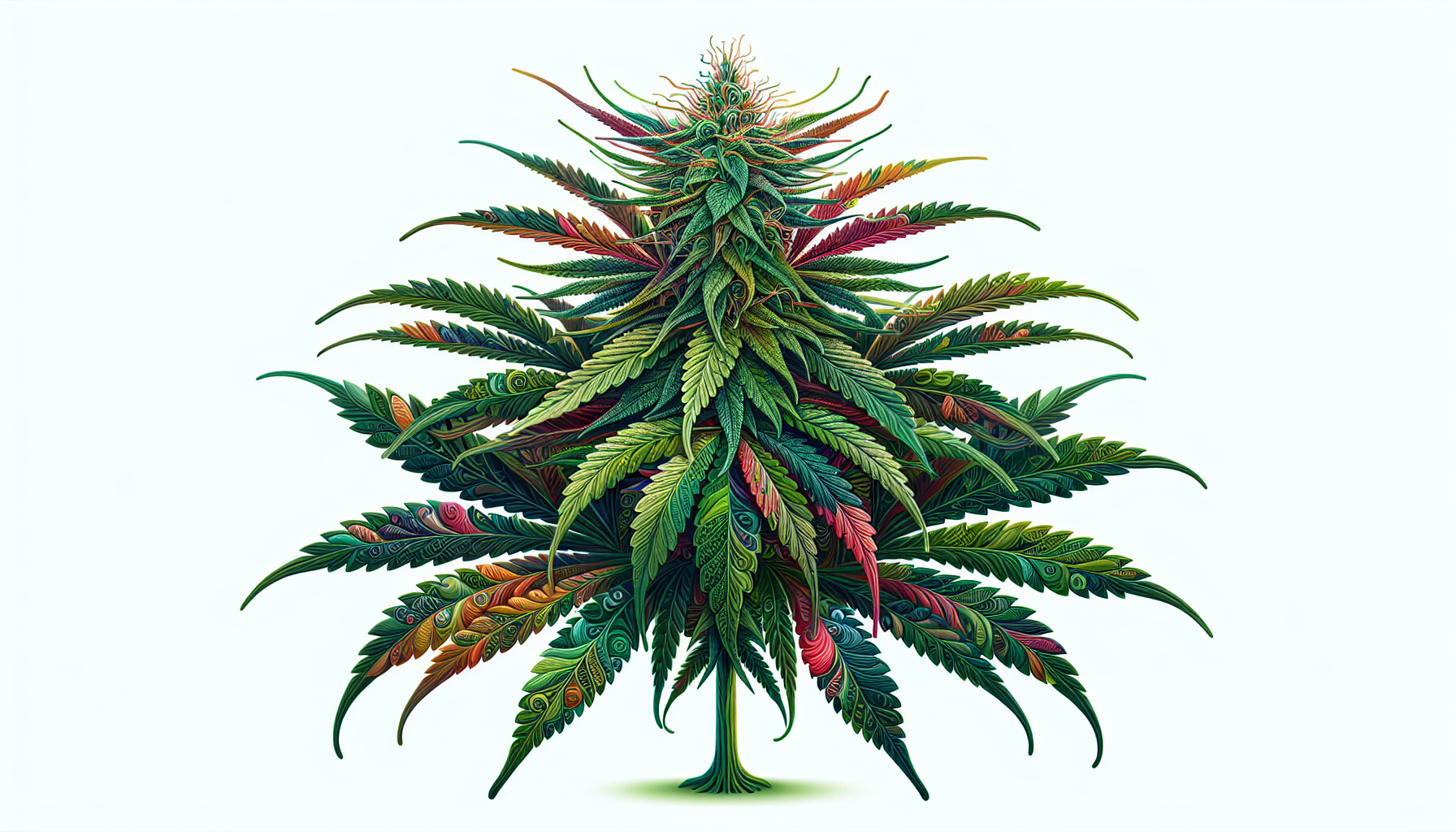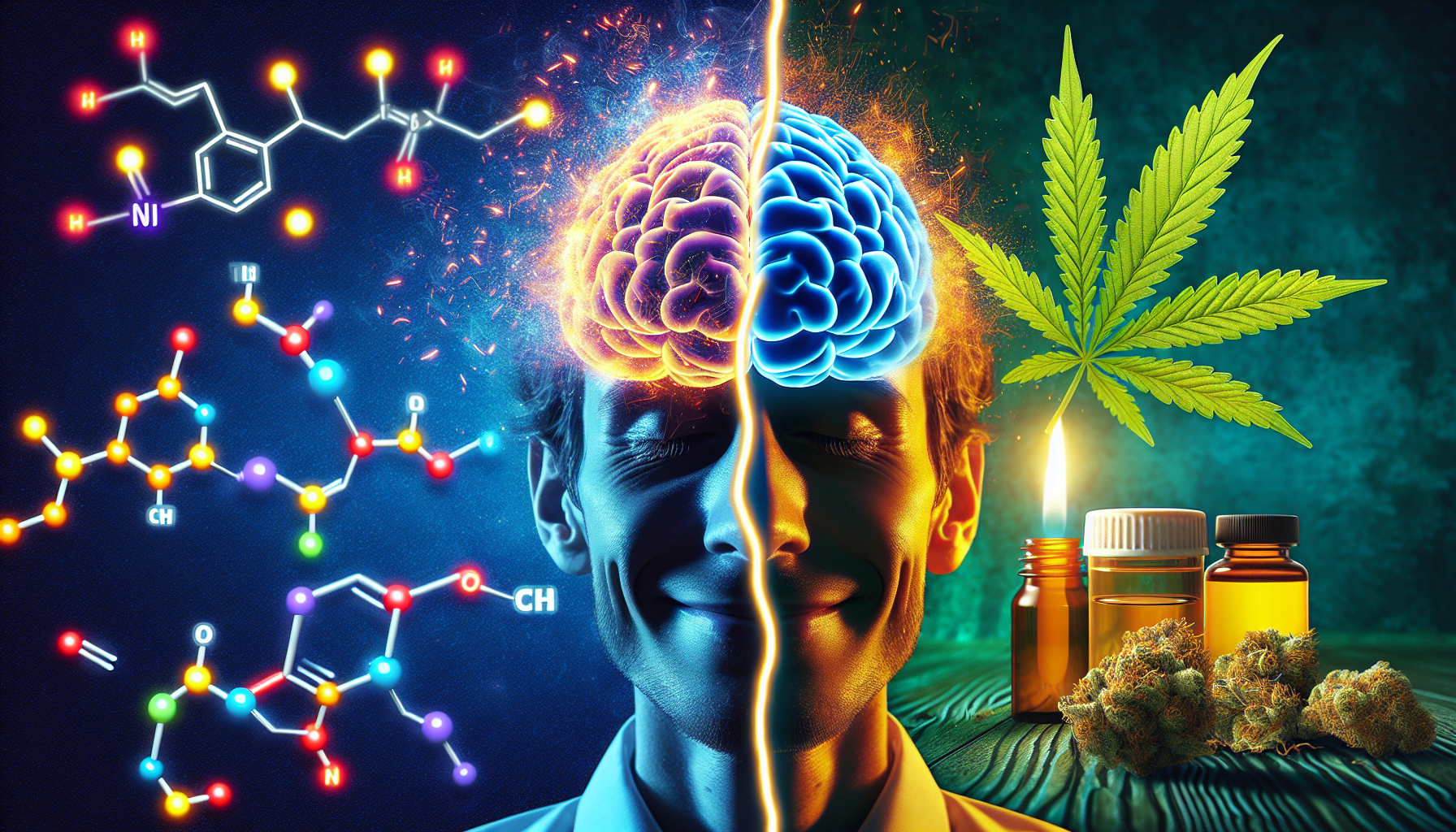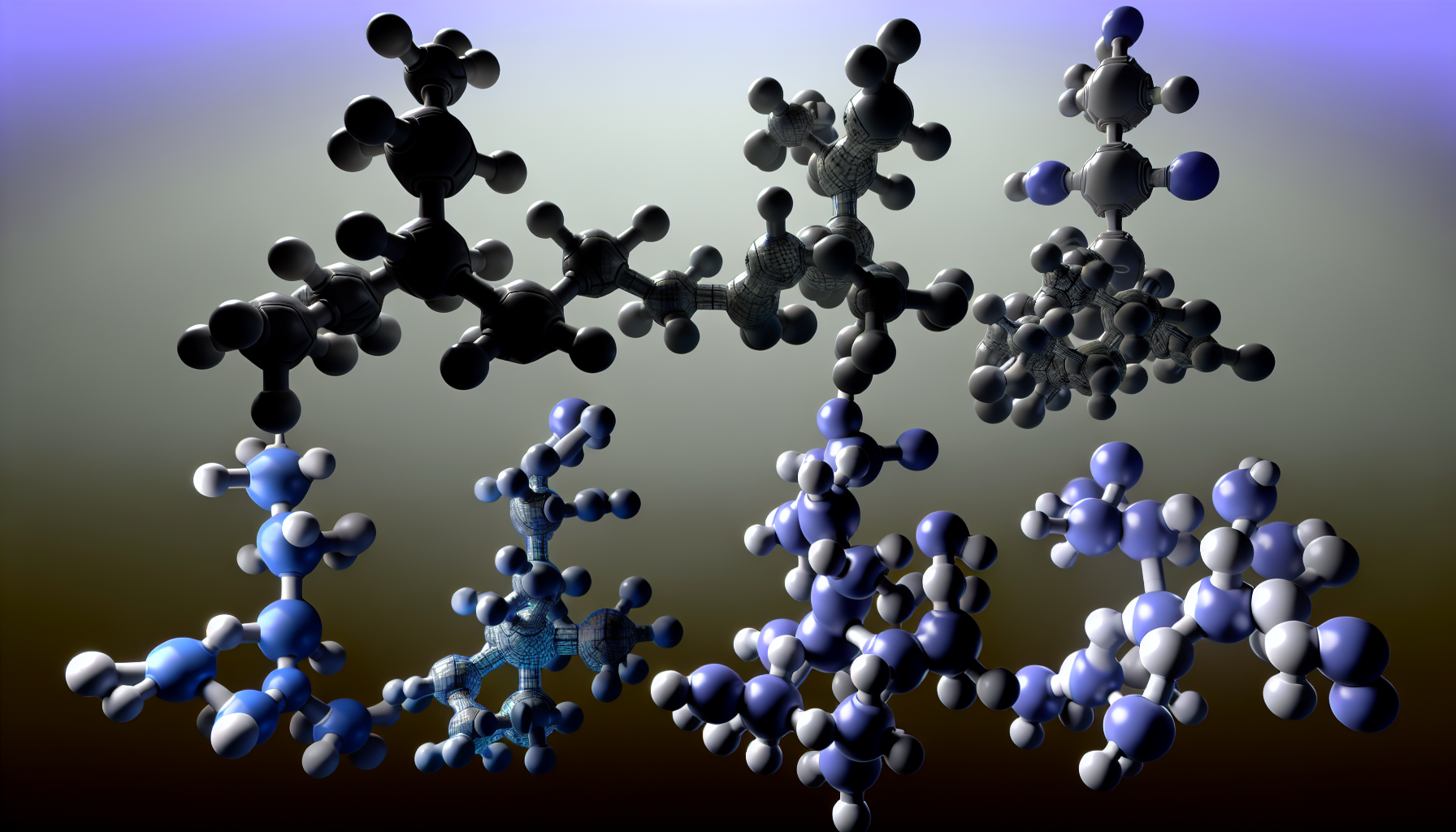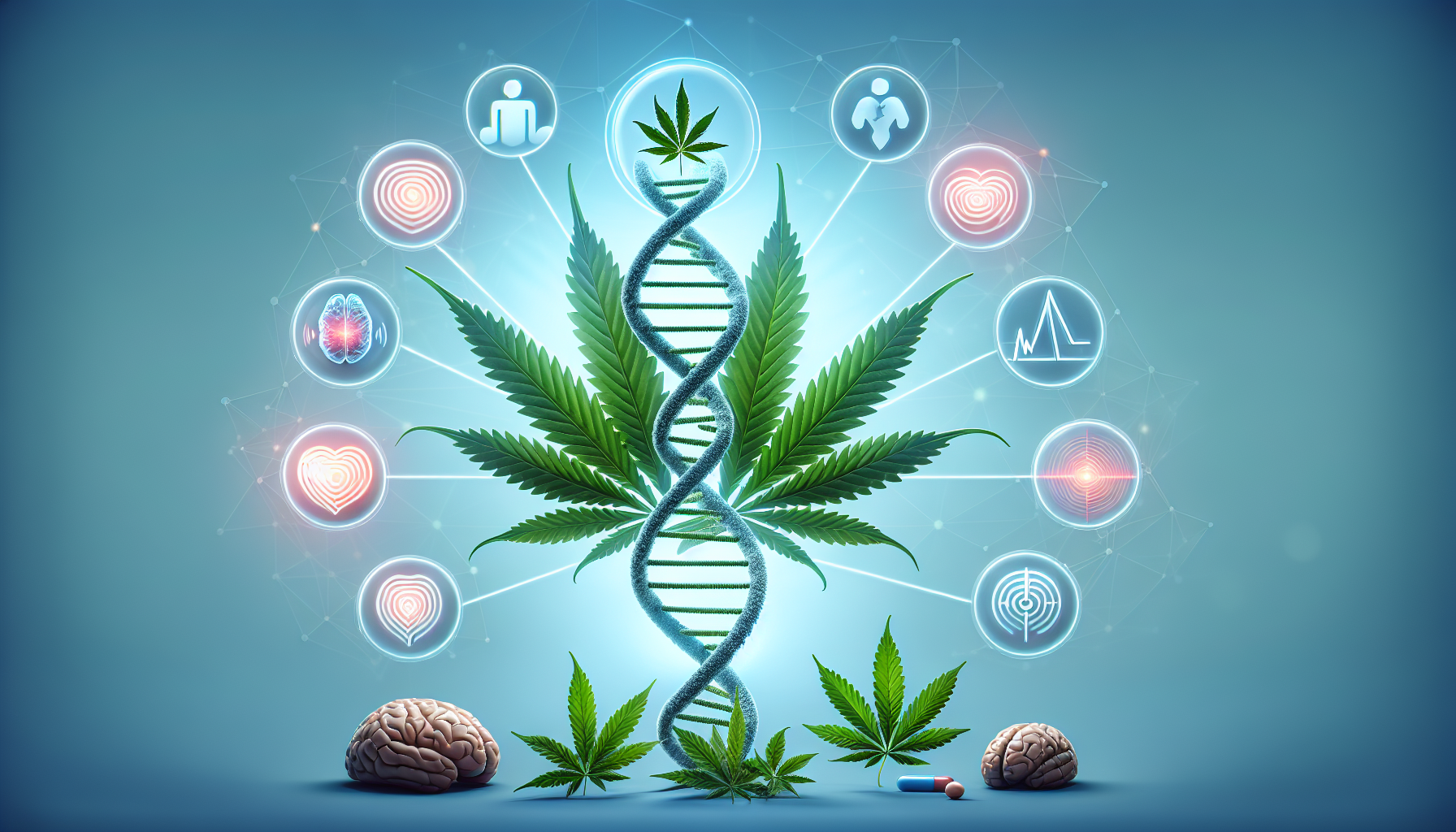Exploring the Essentials: What Are Cannabinoids and Their Effects on Health?
Cannabinoids, the active constituents of cannabis, have sparked widespread interest for their therapeutic potential and intricate relationship with our body’s own endocannabinoid system. You’ve likely heard of THC and CBD, but what are cannabinoids as a whole? This article unpacks their varied effects, medicinal value, and the evolving landscape surrounding their use.
Key Takeaways
- Cannabinoids are chemical compounds found in the Cannabis sativa plant, with THC and CBD being the most well-known; they interact with the body’s endocannabinoid system and have various potential therapeutic effects.
- THC is known for its psychoactive effects and potential medical applications in pain relief and appetite stimulation, while CBD is non-psychoactive with possible uses in treating epilepsy, anxiety, and chronic pain, but both can have side effects.
- The legal status of cannabinoids varies widely, with some form of medical cannabis use permitted in various US states and countries globally, while research into the medical applications and safety of cannabinoids continues to evolve.
Understanding Cannabinoids

Cannabinoids are chemical compounds naturally found in the Cannabis sativa plant. They interact with our body’s endocannabinoid system, influencing a variety of physiological processes. The term ‘medical cannabis’ is often used to describe products derived from these compounds for therapeutic purposes. Among over 100 cannabinoids found in the cannabis plant, THC and CBD are the most extensively researched ones.
Yet, THC and CBD are merely the tip of the iceberg when it comes to the cannabis plant. It harbors over 100 other identified cannabinoids, with a few even gaining Food and Drug Administration’s (FDA) approval for specific medical treatments. Despite the intriguing potential health benefits of these minor cannabinoids, there’s a vast amount of undiscovered information.
Cannabis Plant Components
One such minor cannabinoid that has piqued scientific interest is Cannabigerol (CBG). Known as the ‘mother of all cannabinoids,’ CBG is sourced from young cannabis plants. Unlike THC, CBG does not induce intoxicating psychoactive effects. It shares anti-inflammatory properties with CBD, with each having distinct effects on the body due to their differing molecular structures.
Interestingly, young cannabis plants have higher concentrations of CBG because both CBD and THC originate from CBGA, an acidic form of CBG. As the plant matures, CBGA transforms into various cannabinoids, including THC and CBD. This has led cannabis growers to explore cross-breeding and genetic manipulation techniques to augment the production of CBG in cannabis plants. The National Cancer Institute’s recognition of CBG’s potential anti-cancer properties is another catalyst for these efforts.
The Endocannabinoid System
The endocannabinoid system is a complex cell-signaling system that plays a crucial role in regulating a variety of physiological processes, such as neuropathic pain, mood, and appetite. The value of understanding this system in relation to mental health has been acknowledged by the Mental Health Services Administration.
Cannabinoids including THC and CBD act in the endocannabinoid system by mimicking endocannabinoids, thereby influencing these physiological processes. This interaction underpins their potential therapeutic effects.
Major Cannabinoids: THC and CBD

Among all cannabinoids, THC and CBD are the most well-known. Here are some key differences between the two:
- THC, or delta-9-tetrahydrocannabinol, is the primary psychoactive component in cannabis, responsible for the “high” sensation.
- CBD, or cannabidiol, on the other hand, is non-psychoactive and has potential therapeutic applications.
- Both these cannabinoids, though derived from the same plant, have distinct properties and effects on the body.
THC’s psychoactive properties can induce feelings of euphoria and relaxation but it can be a double-edged sword. Overuse can result in dependence and drug abuse, along with adverse side effects. On the flip side, CBD is non-psychoactive, with potential therapeutic applications and no known risk of addiction. The distinctive properties of these two major cannabinoids have led to their diverse uses in medical treatments and research.
THC: Psychoactive Properties and Medical Uses
Delta-9-tetrahydrocannabinol, or THC, is the star of the cannabis plant, primarily accountable for the psychoactive effects linked with cannabis consumption. When THC is inhaled, it is absorbed into the bloodstream, binding to endocannabinoid receptors in the cerebral cortex, cerebellum, and basal ganglia. This binding affects various functions such as:
- thinking
- memory
- pleasure
- coordination
- movement
Beyond its psychoactive effects, THC also exhibits potential medical applications, such as providing pain relief and stimulating appetite. However, like any other medicinal compound, THC’s use is not without risks. Potential negative impacts include hallucinations, paranoia, and seizures.
CBD: Non-Psychoactive Benefits
If THC is the star of the cannabis plant, CBD, or cannabidiol, is its unsung hero. CBD is non-psychoactive, meaning it does not produce the ‘high’ associated with cannabis use. This property makes CBD a promising therapeutic agent for various health conditions.
CBD has shown efficacy in managing severe childhood epilepsy syndromes like Dravet syndrome and Lennox-Gastaut syndrome (LGS), which often show resistance to antiseizure medications. Besides, CBD may offer potential benefits in managing conditions such as anxiety, insomnia, and chronic pain. However, like THC, CBD is also not without potential side effects, which may include dry mouth, low blood pressure, lightheadedness, and drowsiness.
Lesser-Known Cannabinoids

Beyond THC and CBD, the cannabis plant is a treasure trove of other cannabinoids, often referred to as minor cannabinoids. Among them, Cannabigerol (CBG), Cannabinol (CBN), and Tetrahydrocannabivarin (THCV) are gaining attention in the scientific community. These cannabinoids, though less known, have potential health benefits and are becoming the focus of promising research.
Nevertheless, these minor cannabinoids haven’t received as much scientific attention as THC and CBD. Researchers are only starting to uncover their possible health benefits and risks. The exploration of these minor cannabinoids is expected to further shape the future of cannabinoid research, potentially leading to new therapeutic applications.
CBG (Cannabigerol)
Cannabigerol (CBG) is known for its possible anti-inflammatory, analgesic, and neuroprotective qualities. It has shown potential in combating breast cancer cells and the inflammatory cells associated with this cancer. As CBG mimics endocannabinoids within the body, it is metabolized by the endocannabinoid system, indicating its potential involvement in the regulation of physiological processes.
Our knowledge about CBG, however, remains limited and inconclusive. The possible side effects, risks, and safety concerns associated with CBG use are not entirely understood, underlining the need for additional research.
CBN (Cannabinol)
Another minor cannabinoid, Cannabinol (CBN), originates from the cannabis plant. It’s a less powerful version of THC and develops as THC components in the cannabis plant decay over time. Current research suggests that CBN may potentially function as a sleep aid, however, the evidence is not definitive.
Despite this potential, there’s still much to learn about CBN. The scientific understanding of its potential benefits, risks, and the most effective methods of consumption is still in its early stages.
THCV (Tetrahydrocannabivarin)
Tetrahydrocannabivarin (THCV) is a compound derived from cannabis that exhibits a unique feature among cannabinoids. It has been associated with appetite suppression and mitigating the intoxicating effects of THC. However, more research is needed to understand if THCV induces intoxicating effects when isolated and purified.
THCV’s chemical structure closely resembles Δ9-THC, with the primary distinction lying in the length of its alkyl side chain. Studies on THCV’s effects have indicated its potential to reduce appetite, increase feelings of fullness, and boost energy metabolism, indicating its potential applicability in weight management.
Medical Applications of Cannabinoids

The identification of cannabinoids and their interaction with the human endocannabinoid system has unveiled new horizons in medical science. Cannabinoids have found their way into medical treatment for a variety of conditions, including:
- Severe forms of epilepsy
- Chronic pain
- Multiple sclerosis symptoms
- Chemotherapy-induced nausea and vomiting
However, the Food and Drug Administration (FDA) has not granted approval for the medical use of the cannabis plant itself. Nevertheless, several drugs containing individual cannabinoids have been approved by the FDA. This indicates the potential of cannabinoids as therapeutic agents, subject to rigorous scientific validation and regulatory approval.
Risks and Side Effects of Cannabinoid Use
As with any substance that affects human physiology, cannabinoids come with their share of potential risks and side effects. The use of marijuana has been linked to an increased risk of various psychiatric conditions, such as:
- psychosis
- depression
- anxiety
- schizophrenia
- substance use disorders, including substance abuse
High doses of THC have the potential to disrupt chromosomal stability, which could have hereditary implications on cell instability and cancer risk.
CBD, despite its potential therapeutic benefits, is not without potential side effects. Some important considerations to keep in mind when using CBD are:
- Consuming high doses of CBD has been linked to abnormalities in liver-related blood tests, indicating the need for caution when using CBD at high doses.
- CBD use has been associated with male reproductive harm, so it is important to be aware of this potential risk.
- CBD may also interact with other drugs, so it is important to consult with a healthcare professional if you are taking any medications.
These considerations highlight the importance of using CBD responsibly and under the guidance of a healthcare professional.
Legal Status and Regulation
The legal status and regulation of cannabinoids vary by country and state. As of 2022:
- Cannabis remains classified as a Schedule I controlled substance by the U.S. federal government.
- Dronabinol is categorized as Schedule III in capsule form (Marinol) and Schedule II in liquid oral form (Syndros).
- However, 38 states, four territories, and the District of Columbia in the United States have permitted the medical use of cannabis.
Around the world, the legal status and regulation of cannabinoids are evolving. In Canada, the recreational use of cannabis was legalized in October 2018. In Europe, while most EU countries prohibit personal use of cannabis, Germany and Malta have taken significant steps towards potentially legalizing recreational cannabis.
Methods of Consumption

Various methods are available for consuming cannabinoids, which include:
The method of consumption can significantly impact the effects of cannabinoids. For instance, consuming edibles or products with high THC concentration can lead to delayed or unpredictable effects and increase the risk of overdose or poisoning.
Among these methods, the consumption of cannabinoids through capsules offers several advantages such as:
- Alleviation of nausea and vomiting
- Pain management, including cancer pain
- Addressing sleep disorders
- Reducing anxiety
- Controlling seizures
- Reducing inflammation
- Potential treatment for cancer.
Another promising method is the use of cannabinoid patches, specifically CBD patches, which offer sustained, long-term delivery of CBD while causing minimal adverse effects.
Cannabinoids in Dietary Supplements and Foods
While the addition of cannabinoids to dietary supplements and foods has become increasingly popular, it’s important to note that this trend is governed by legal limitations. THC or CBD cannot be legally marketed as dietary supplements, and foods with added THC or CBD cannot be legally sold in interstate commerce.
While the production of supplements and foods containing cannabinoids, particularly THC and CBD, is prohibited by federal law, common sources of cannabinoids in food and dietary supplements include:
- Hemp seeds
- Dietary supplements
- Dried hemp
- Cannabinoid-containing food
It’s important to note that CBD products labeled as dietary supplements may not accurately reflect the stated amount of CBD.
Future Research and Developments
Cannabinoid research is in its nascent stages. Although initial findings hold promise, several hurdles stand in the way of research and development for cannabinoid-based treatments. These challenges include:
- Accessing cannabis products
- Securing funding
- Understanding the complex nature of cannabis plants
- Dealing with the low solubility, swift metabolism, and poor bioavailability of cannabinoids.
Nevertheless, the field of cannabinoid research is rapidly advancing, with focus areas encompassing agriculture and plant biology, medical applications for chronic pain and cancer treatment, and the scientific research of clinical cannabis, cannabinoids, and medical marijuana, as supported by the National Cancer Institute.
As recent findings facilitate the creation of cannabinoid medications that can efficiently address particular symptoms while causing minimal side effects, the future of cannabinoid research holds exciting possibilities for prescription drugs.
Summary
Cannabinoids, found in the cannabis plant, have become a focal point in scientific research due to their potential health benefits and controversies. They interact with our body’s endocannabinoid system, influencing a variety of physiological processes. Among over 100 cannabinoids found in the cannabis plant, THC and CBD are the most extensively researched ones.
While the potential health benefits of these minor cannabinoids are intriguing, much remains to be discovered. The exploration of these minor cannabinoids is expected to further shape the future of cannabinoid research, potentially leading to new therapeutic applications. As research continues to evolve, the application of cannabinoids in medicine is likely to expand, offering new hope for patients worldwide.
Frequently Asked Questions
What are 4 examples of cannabinoids?
Commonly found cannabinoids in cannabis include THC-acid (THCA), CBD-acid (CBDA), Cannabigerol (CBG), and Cannabigerolic acid (CBGA). These compounds are among the many cannabinoid entities identified in the plant.
Are cannabinoids and Marijuanas the same?
No, cannabinoids and marijuanas are not the same. Cannabis contains over 400 chemical entities, with more than 60 being cannabinoid compounds, while marijuana refers to the dried leaves and flowers of the cannabis plant.
What do cannabinoids do to the body?
Cannabinoids, including those found in cannabis, interact with receptors in the central nervous system, affecting behavior, mood, and coordination. They may also produce euphoria, sensory enhancement, and cognitive impairment in humans.
Is CBD a cannabinoid?
Yes, CBD is a cannabinoid found in the cannabis plant. It is one of many cannabinoids present, alongside THC.
Is CBD the same as Marijuanas?
CBD is not the same as marijuana. While CBD is a single compound in the cannabis plant that does not produce a high, marijuana contains various compounds, including CBD and THC.








